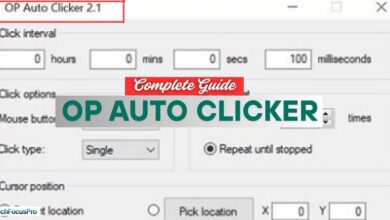How Much Does Interactive Legal Software Cost?

Choosing the right legal software is important for any law firm or legal professional. It can help improve productivity, streamline tasks, and enhance overall efficiency in daily operations. However, understanding various software’s pricing options and features can feel overwhelming.
This guide aims to break down everything you need to know about the costs involved, from basic pricing structures to hidden fees, so you can make an informed choice that fits your budget and meets your needs.
Key Pricing Models
Understanding the different pricing models of legal software is not just about making an informed decision; it’s about empowering you to confidently choose the best option for your needs. Here are the most common ones, explained clearly:
Subscription-Based Pricing
This is one of the most popular models. In this model, you pay a regular fee—typically monthly or annually—for access to the software. Your subscription often includes updates and support as long as you continue, making it predictable and easy to budget.
Per-User Pricing
The per-user pricing model charges you based on the number of users accessing the software. It’s ideal for smaller teams, and by monitoring the number of users, you can effectively control your costs as your team grows.
Perpetual Licensing
This involves a one-time payment to purchase the software license, giving you lifetime ownership. While this may seem cost-effective in the long run, additional costs like updates or technical support may not be included.
Usage-Based Pricing
The usage-based pricing model calculates costs based on how much you use certain software features or services. This flexible option is perfect for firms with unpredictable or occasional software needs, allowing you to adapt to changes in demand.
Free and Freemium Models
Some software offers free versions or basic plans with limited features. Upgrading to paid plans unlocks access to advanced tools. This can be a good test before committing to a full plan.
Understanding these pricing models helps you align your choice with your budget while ensuring you get the needed features. When analyzing these options, always consider the potential for additional costs like training, maintenance, or integrations.
Read More: The Importance of Local PPC Advertising for Lawyers
How Much Does Interactive Legal Software Cost

The cost of interactive legal software can vary widely depending on the features, functionality, and level of customization required. Basic packages for smaller firms or solo practitioners may cost a few hundred dollars annually.
Conversely, more comprehensive solutions, which include advanced automation, integrations, and client management tools, may cost several thousand to tens of thousands of dollars annually.
Additionally, some providers charge setup fees or offer tiered Pricing based on the number of users or clients managed. It’s essential to carefully assess your firm’s specific needs to find a software package that offers the right balance of price and value.
Read More: Maximizing Efficiency in Law Firms with Automated Document Solutions
Market Comparisons
Market comparisons involve examining the software options available and comparing their features, Pricing, and customer reviews. This helps you understand what each product offers and whether it fits your needs and budget.
By comparing various options, you can identify the best value for your money, spot any useful additional features, and avoid overpaying for tools you may not use. This ensures you’re making an informed decision before committing to a purchase.
Hidden Costs to Consider

When choosing software, it’s important to look beyond the price tag and think about any hidden costs that might come up later. For example, some software requires extra spending to train your team to use it effectively.
Others might charge additional fees for updates, ongoing maintenance, or adding more users to your account. If you need the software to work with other tools you use, there might be integration costs to connect everything.
Also, watch out for costs related to customer support—some companies only offer basic help for free and charge more for in-depth assistance. Knowing these hidden costs helps you avoid surprises and stick to your budget.
Cost-Benefit Analysis
Cost-benefit analysis (CBA) is a simple way to determine whether something is worth your time, effort, and money. It involves weighing the pros and cons of a decision.
On one side, you list all the benefits—like how it will save you time, increase productivity, or help your business grow. On the other side, you list all the costs—like the money you’ll spend upfront, ongoing expenses, or any resources needed to make it work.
A Cost-Benefit Analysis aims to determine whether the benefits outweigh the costs. If the benefits are greater, it’s a good choice.
However, if the costs exceed the benefits, it might not be the right decision. This method is especially useful when comparing different options.
For example, suppose you’re choosing between two types of software. In that case, you can weigh the benefits each one offers against their costs to see which one gives you the best overall value.
Tips for Choosing the Right Interactive Legal Software Within Budget

- Define Your Needs: Clearly outline the specific features and functions you require. Understanding your priorities ensures you don’t pay for unnecessary extras.
- Set a Realistic Budget: Determine how much you’re willing to spend and stick to it. Be sure to include upfront costs and ongoing expenses like subscriptions or maintenance.
- Research Options Thoroughly: Look into multiple software options, read reviews, and explore user feedback. This will help you find software that balances cost and functionality.
- Try Free Trials or Demos: Many software providers offer trial versions or demos. Before committing, use these opportunities to test how well the software meets your needs.
- Consider Scalability: Choose software that can grow with your business. Investing in scalable solutions may save money in the long run by avoiding the need for frequent upgrades.
- Evaluate Total Cost of Ownership (TCO): Look beyond the initial purchase price. Consider factors like time spent on employee training, integration fees, and long-term maintenance costs.
- Negotiating Pricing When purchasing legal software, don’t hesitate to discuss Pricing with vendors. Many providers are open to negotiation, especially if you’re purchasing multiple licenses or committing to a longer-term contract. By negotiating Pricing, you can save your firm a significant amount of money. Check Customer Support and Updates: Select software with reliable customer service and regular updates. Good support can save your business significant downtime and frustration.
By following these tips, you can make a well-informed decision that meets your business requirements while staying within budget.
FAQs
What factors determine the cost of interactive legal software?
The cost of interactive legal software can vary based on factors such as the features included, the size of your law practice, the number of users, and whether the software provider charges a one-time fee or uses a subscription-based model.
Is there a standard pricing model for interactive legal software?
Most providers offer subscription-based plans, often billed monthly or annually. Some plans are tiered, with Pricing increasing as more advanced features or additional users are added.
What is the typical price range for interactive legal software?
Prices can range widely. Basic plans may start as low as $50 per month. At the same time, comprehensive tools with advanced features could cost several hundred dollars per month per user.
Are there additional costs to consider?
Yes, additional costs may include onboarding or training fees, customization fees, or charges for software updates. It’s essential to clarify with the provider what the Pricing includes.
Can I try the software before purchasing?
Many providers offer free trials or demo versions to allow potential users to evaluate the software before committing to a purchase. Be sure to check if this option is available.
Do discounts or flexible payment plans exist?
Some software companies provide discounts for annual subscriptions or have flexible payment options for larger firms or long-term commitments. Non-profits or educational institutions may also qualify for special rates.
Closing Thoughts
Choosing the right software for your business might feel overwhelming, but taking it step by step can make the process much easier. Focus on your business needs, consider future growth, and consider all the costs involved—not just the initial price. Take advantage of free trials or demos to see if the software fits before deciding. Also, don’t be afraid to ask for better Pricing or extra features from the vendor. Remember, good customer support and regular updates are as important as the software. With careful planning and research, you can find a solution that helps your business succeed.






